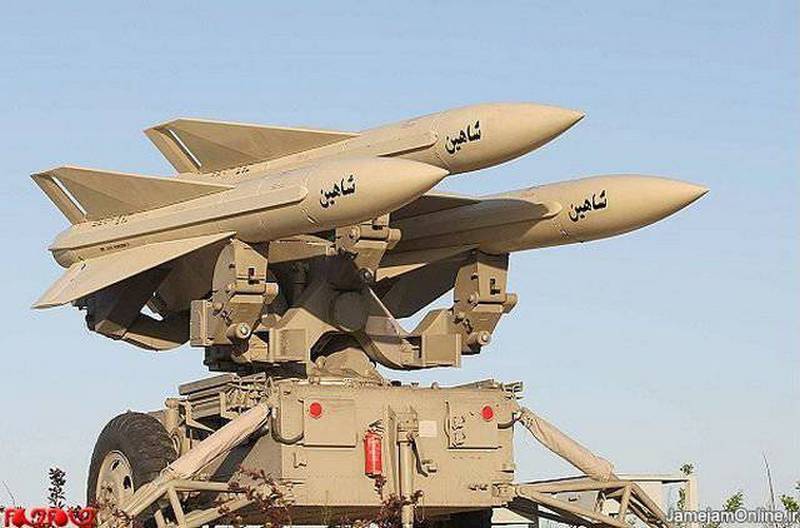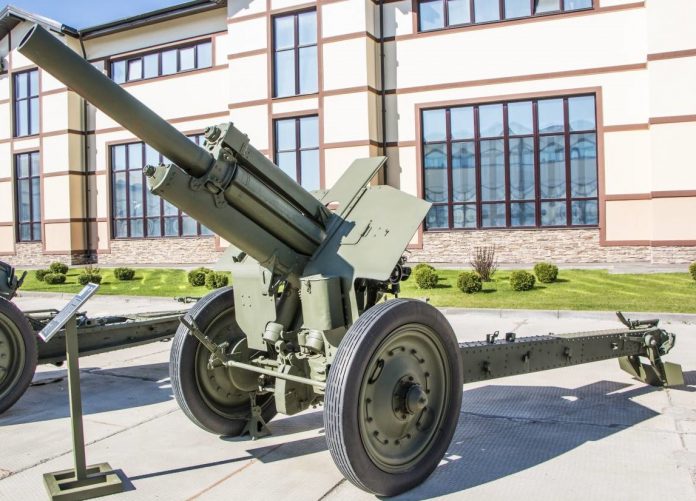
Howitzer M-30, some, probably, all. The famous and legendary weapon of the workers 'and peasants', Soviet, Russia and many other armies. Any documentary about the Great Patriotic almost necessarily involves firing battery frames M-30. Even today, regardless of age, it is an instrument in service in many armies of the world.
And by the way, 80 s as if ...
so, speech today will focus on the 122-mm howitzer sample 1938 , the M-30. A howitzer, which many experts call the era artillery. A foreign experts - the most popular weapon in the history of artillery (about 20 thousand units). system, where the most organic way to connect the old, proven long-term operation of other instruments, solutions, and new, previously unknown.
In a previous publication of this article, we talked about the most numerous of the Red Army howitzer pre-war period - 122-mm howitzer samples 1910/30 years. That is the howitzer in the second year of the war was replaced by the number of M-30. According to various sources, at 1942 , the number of M-30 was more than its predecessor.
Materials on the establishment of a system of many. Virtually all understand the nuances of the different competitive KB, tactical and technical characteristics of weapons, design features, etc.. Point of view of the authors of such articles are sometimes diametrically opposed.
Disassemble all parts of such disputes do not want. Therefore, the historical part of the narrative, "dashed", leaving readers right to their own opinion on the matter. Opinions of the authors just one of many, and can not serve as the only true and definitive.
so, 122-mm howitzer samples 1910/30 years out of date by the middle of the 30s. That "small modernization", who spent 1930 year, only extend the life of the system, but did not return to her youth and functionality. That is, it could serve as a weapon yet, the whole question - how. Niche divisional howitzers would have been soon enough empty. And it's all understood. command of the Red Army, state leaders and designers themselves artillery systems.
AT 1928 year even turned quite lively discussion on the issue after the publication of an article in the "Journal of the artillery committee". Disputes were conducted on all fronts. From deployment and design tools, until the necessary and sufficient caliber howitzers. On the basis of the First World War experience justifiably considered several calibers, from 107 to 122 mm.
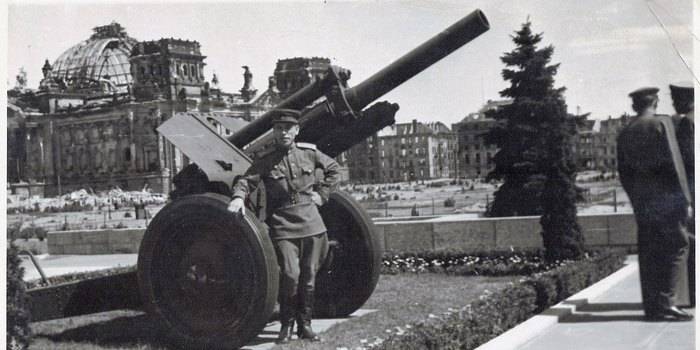
Reference for the development of artillery systems to replace obsolete divisional howitzers designers got 11 August 1929 of the year. Studies on caliber howitzers unambiguous about the choice of response 122 mm no. Authors tend to the most simple and logical explanation.
Ammunition is of this caliber in the Red Army had enough. Furthermore, the country was able to produce these weapons in the required amount in the existing plants. And the third, Logistics delivery of ammunition has been greatly simplified. The largest howitzer (Countdown. 1910/30city) and the new howitzer could be provided with a "one box".
Describe the problems with the "birth" and preparing for mass production howitzers M-30 makes no sense. This was perfectly described in "Encyclopedia of Russian artillery", probably, most authoritative historian artillery A. B. Shirokorad.
Tactical and technical requirements for the new divisional howitzer Artillery Directorate of the Red Army announced in September 1937 of the year. Requirements are quite strict. Especially in the shutter. AU requisitioning klinovogo prison (promising and has a great potential for modernization). Engineers and designers must understand, that this system is not sufficiently reliable.
Development howitzers were engaged just three bureau: Ural Machine Building Plant ("Uralmash"), plant number 172 the Molotov («Motoviliha», Permian) and the Gorky plant №92 ("Nizhny Novgorod Machine Building Plant").
these plants represented howitzers samples were quite interesting. But the development of the Urals (U-2) significantly inferior to Gorky (F-25) and Perm (M-30) ballistics. Therefore it is not considered as promising.
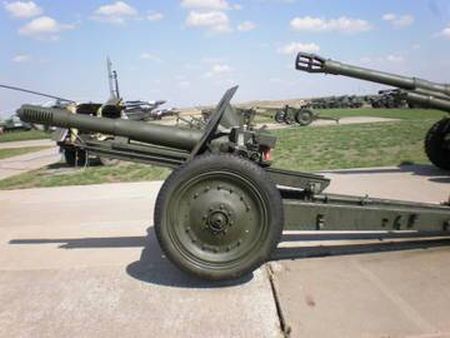 Howitzer U-2
Howitzer U-2
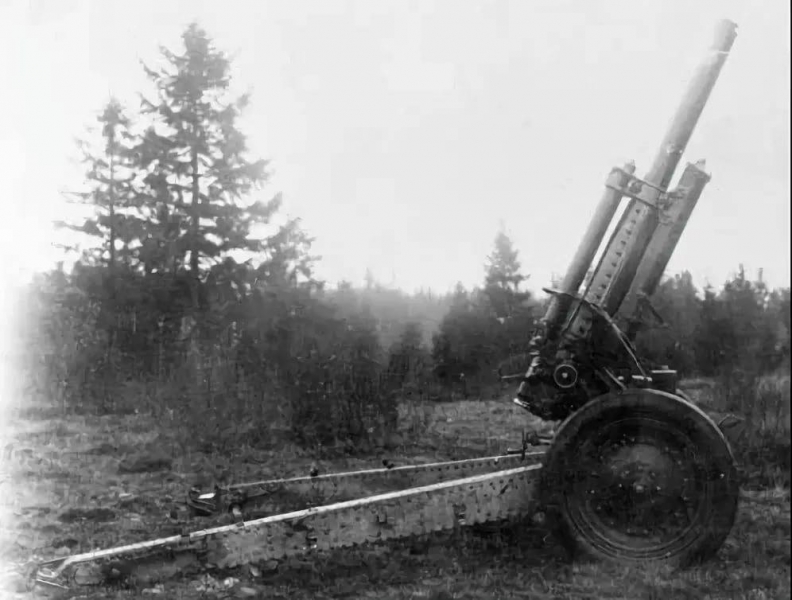 Howitzer F-25 (likely)
Howitzer F-25 (likely)
We look at some of the performance characteristics of F-25 / M-30:
barrel length, mm: 2800 / 2800
rate of, c / min: 5-6 / 5-6
The initial velocity of the projectile, m / sec: 510 / 515
angle HV, city: -5…+65 / -3…+63
firing range, m: 11780 / 11800
ammunition, index, the weight: OF-461, 21, 76
Weight in firing position, kg: 1830 / 2450
Calculation, people: 8 / 8
released, PC: 17 / 19 266
We do not inadvertently lead of the TTX in the same table. It is in this version is perfectly visible it seems to be the main advantage of the F-25 - weight tools. agree, a difference of more than half a ton of impressive. AND, probably, this fact has become a staple in determining Shirokorad this design, how best. The mobility of the system is undeniable above. It is a fact.
true, and here is the "crux", in our opinion. Provided on the test M-30 were slightly lighter than standard. And because the gap in the mass was not so noticeable.
This raises the question of the decision. Why M-30? Why does not the lighter F-25.
The first and basic version sounded more 23 Martha 1939 at the same "Journal of artillery committee» №086: «122-mm howitzer F-25, developed plant №92 on its own initiative, for the AU is currently no interest, as it has already been completed landfills and military tests M-30 howitzer, more powerful, than the F-25 ".
agree, such a statement at the time, much puts into place. howitzer has. The howitzer has been tested and there is nothing more to spend the people's money to develop the necessary tools to nobody. The continuation of further work in this direction has been fraught for designers' move to any sharashka "with the help of the NKVD.
by the way, The authors in this regard agree with some researchers on the issue of the installation on the M-30 is not V, and good old interrupted screw. Likely, the designers went to a direct violation of the requirements of AU is due to the reliability of the piston valve.
Problems with the semi-automatic wedge gate at that time were also observed at the smaller caliber guns. for example, F-22, universal 76-mm divisional gun.
Winners are not judged. Although, it which way you look. risked course. In November 1936 g. He was arrested and sentenced to 5 years in prison chief of bureau Motovilikha plant B. A. Berger, a similar fate in January next year, a leading designer of 152-mm howitzer-gun ML-15A. A. Ploskireva.
After such a clear desire of developers to use already tested and debugged in production interrupted screw, to avoid possible accusations of sabotage in the event of problems with his design of the wedge type.
And there's one more thing. The smaller compared with competitors howitzer weight F-25 provided by the machine and carriage 76 mm cannon. The gun was more mobile, but had a shorter life due to the "flimsy" mast. It is only natural, that 122 mm projectile gave a completely different pulse return, than 76 mm. Muzzle brake, apparently, at that time did not provide the proper pulse reduction.
obviously, that lighter and mobile F-25 prefer a firmer and having a great resource of M-30.
by the way, more proof of this hypothesis, we found in the life of the M-30. We often write about, that constructively successful field guns soon "transplanted" to the already captured or used chassis and continued to fight now as ACS. The same fate awaited and M-30.
Part M-30 used to create the SU-122 (on captured StuG III chassis and chassis T-34). However, the car turned out unsuccessful. M-30, with all its might, It was quite hard. Column book-rests installation of weapons on the SU-122 takes up space in the fighting compartment SAU, creating considerable inconvenience to the crew. Long reach forward recoil devices with their bookings obstructed view from the driver's seat and not allowed to place on the frontal plate full hatch for him.
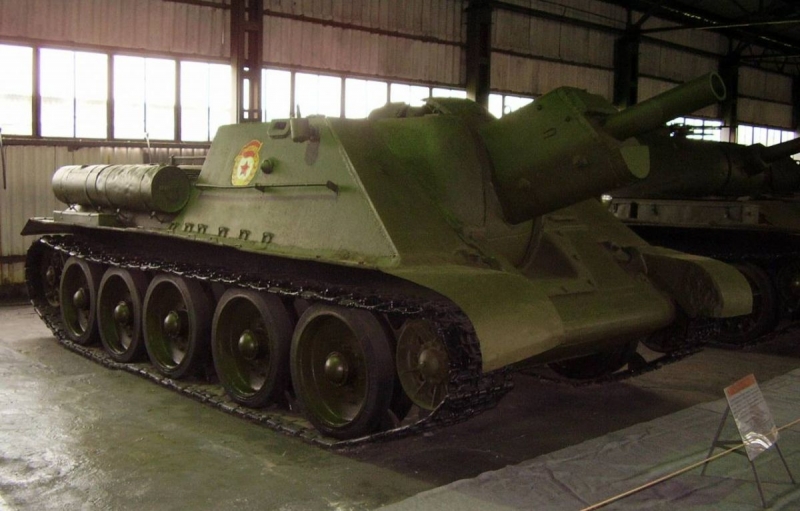
But the main thing - medium tank base was too fragile for such a powerful weapon.
From the use of this system was abandoned. But the attempts were not over. In particular, in one embodiment now famous aviadesantiruemoy SAU "Violet" was used exactly M-30. But we prefer a universal 120-mm gun.
Another disadvantage to the F-25 could be just its smaller mass in combination with the already mentioned muzzle brake.
The lighter gun, the greater its chances of use for the direct support of the forces of fire.
by the way, It is in this role at the beginning of World not just once or twice performed poorly suited for such purposes, the M-30. Not a good life, understandably.
Naturally, that the deflected powder gases muzzle brake, raises dust, sand, soil particles or snow, easier to be given C-25 position as compared to M-30. And when firing from the closed position a short distance from the front lines at a low angle of elevation with the possibility of such unmasking should be considered. Someone in the AU could well take all this into account.
Now directly on the howitzer design. Structurally, it consists of the following elements:
- trunk with a free tube, housing, covering approximately the middle of the pipe, and navintnym breech;
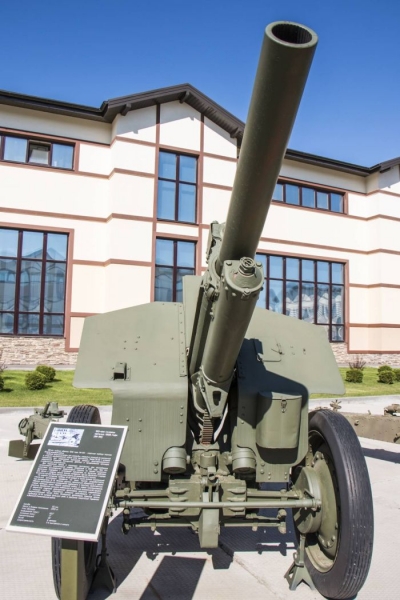
- a piston valve, Opening right. Closing and opening of the shutter by turning handle. The gate mounted hammer mechanism with a linearly moving drummer, screw mainspring and rotary hammer, for cocking the hammer and the descent was delayed trigger trigger cord. The ejection of spent cartridges from the chambers was performed by opening the shutter ejector in the form of a cranked lever. There was a safety mechanism, prevents premature unlocking of the shutter when hang fire;
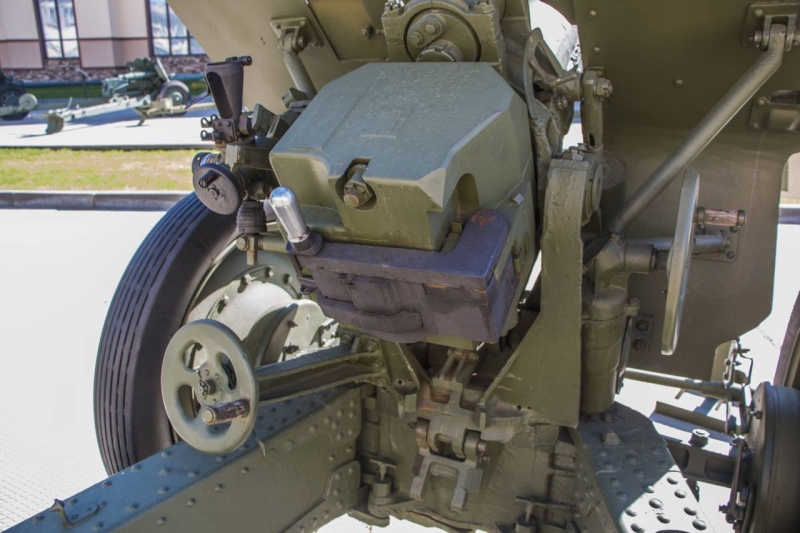
- Carriages, which included cradle, recoil device, upper machine, mechanisms aiming, balancing mechanism, lower lathe with sliding box-like supports to, martial swing and cushioning, sights and a shield cover.
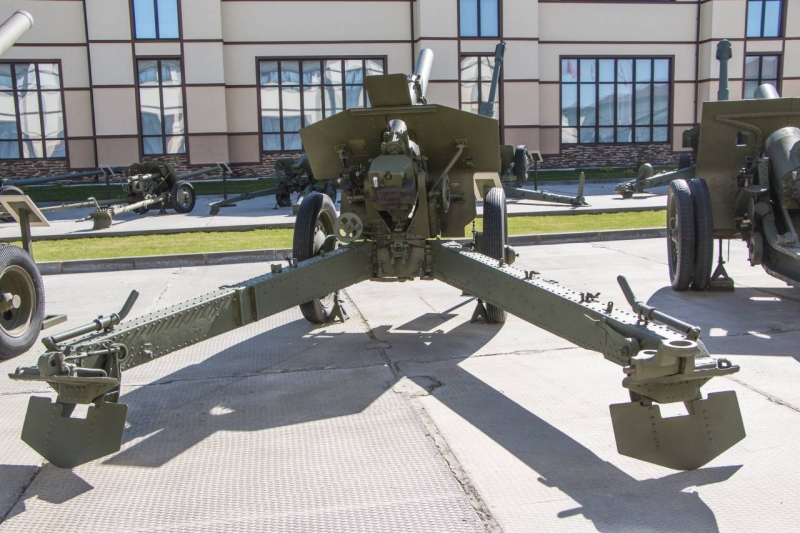
Cradle oboymennogo type was packed in nests upper trunnions machine.
Recoil device includes a hydraulic recoil brake (under the barrel) and gidropnevmatičeskij nakatnik (above the barrel).
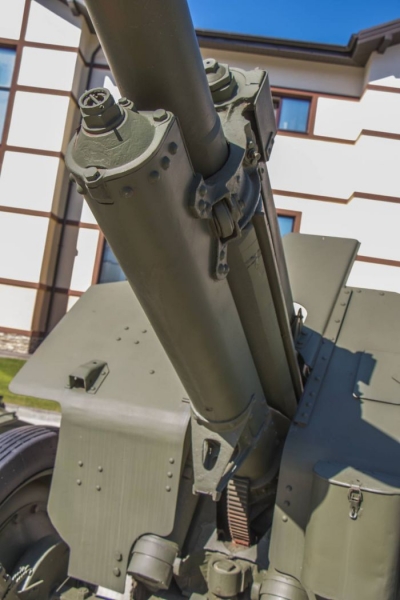
Upper sleeve bridged machine inserted into the slot of the lower machine. Shock absorber pin to spring for posted position of the top of the machine relative to the lower and facilitates its rotation. On the left side of the top machine screw mounted rotating mechanism, on the right - a sector lifting mechanism.
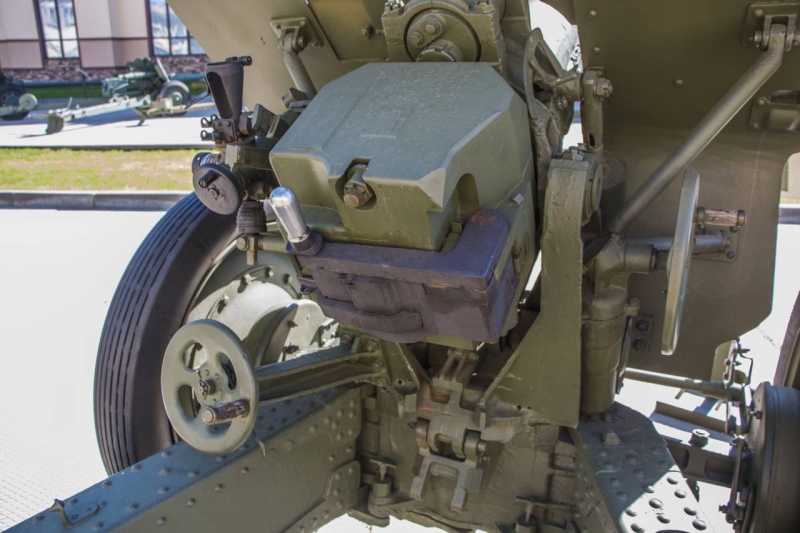
Battle progress - with two wheels, drum brakes, switchable transverse leaf-spring. Disabling and enabling suspension automatically when it is slid and the widening of the trails.
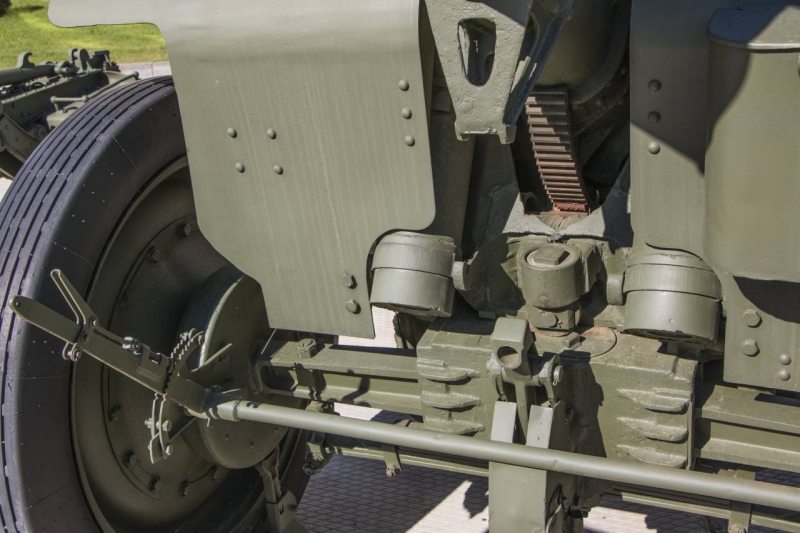
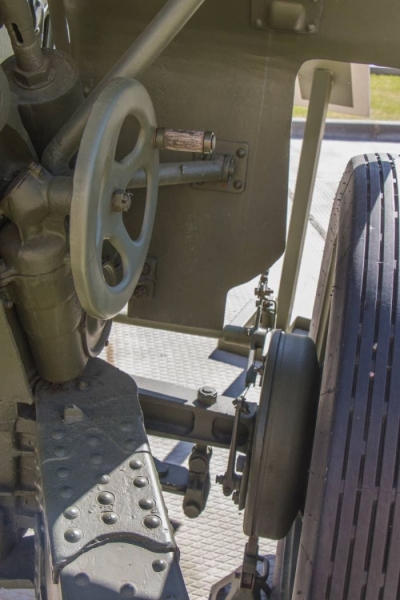
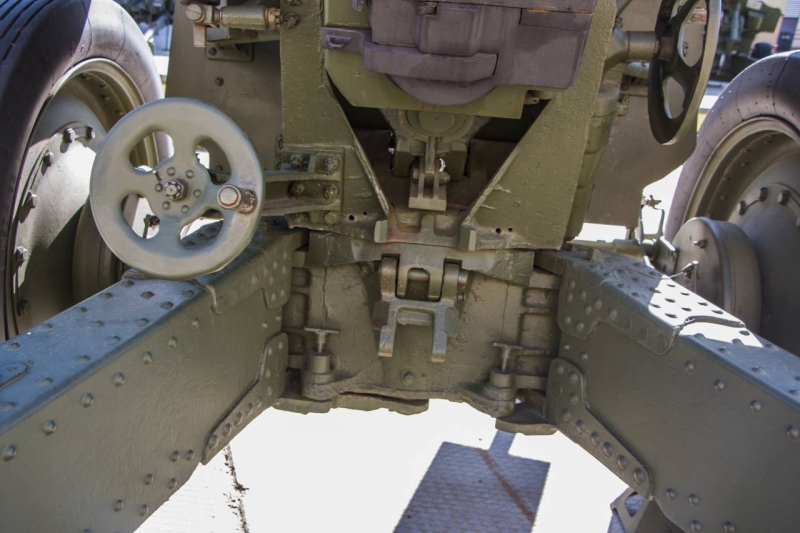
Sights include the sights, independent tools (with two arrows) Hertz and panorama.
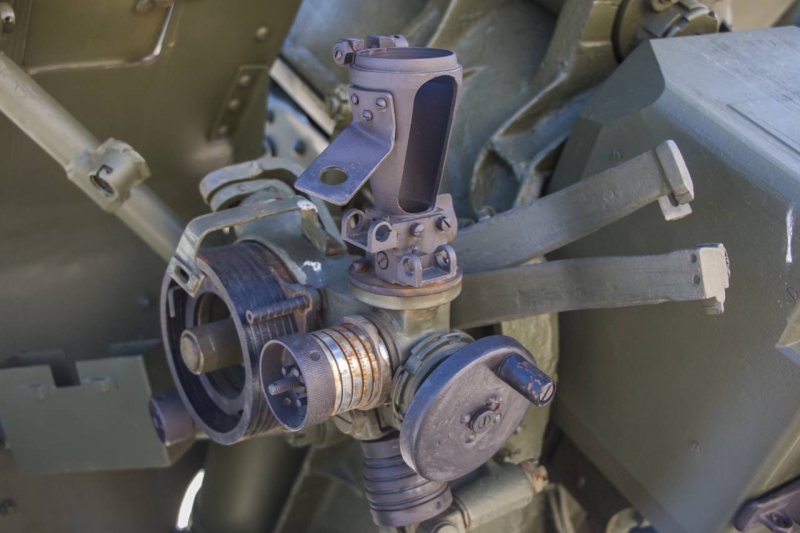
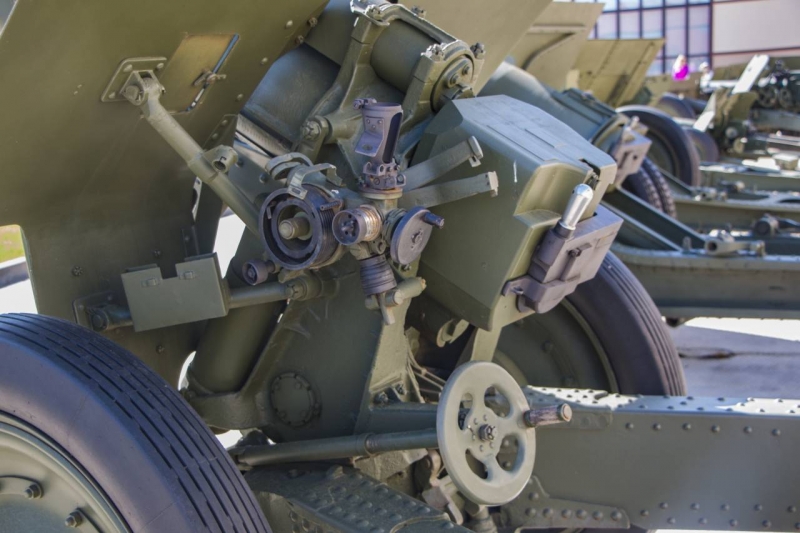
In the history of this legendary Howitzer still many blind spots. The story continues. contradictory, largely incomprehensible, but the story. The brainchild of the design team led by F. F. Petrova is so harmonious, that is still. And it is perfectly blended, not only in shooting connection, but also in the tank, mechanized and motorized units.
And not only our army in the past, but now. More than two dozen countries continue to be armed with M-30. Indicating that, that the weapon could more than.
Having participated in almost all wars, since the Second World, M-30 has proven its reliability and simplicity, having received the highest assessment of Marshal of Artillery Mr.. F. Odintsov: "Better it can no longer be anything".
Of course, can.
After all, all the best, that was in the howitzer M-30, embodied in 122-mm D-30 howitzer (2A18), which became a worthy heir to the M-30. But about it, naturally, It will be a separate conversation.







